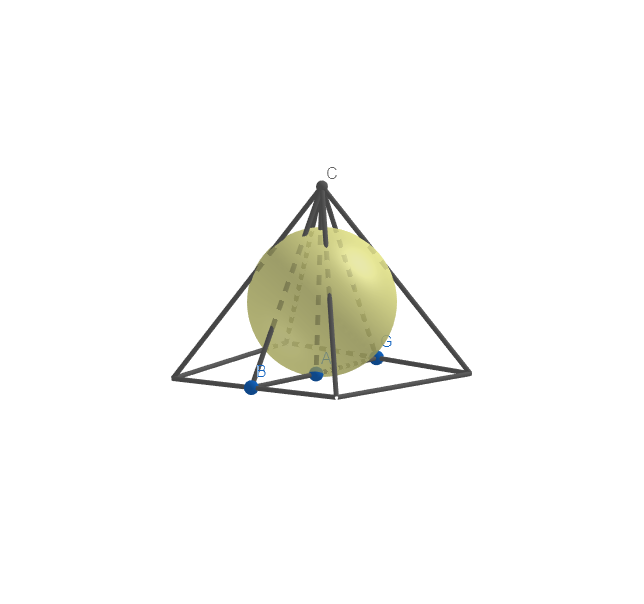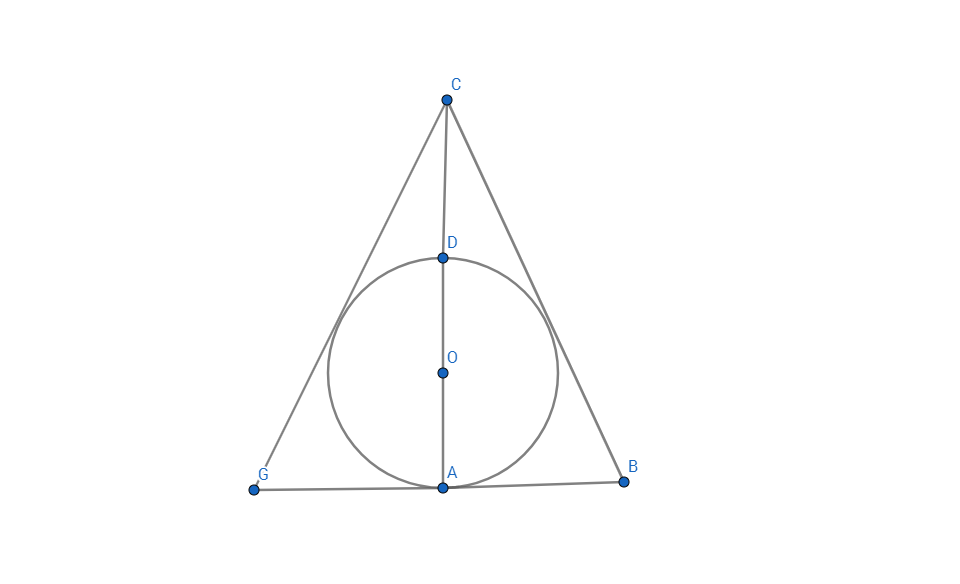Inscribed and Circumscribed Spheres

A sphere is inscribed in the pyramid above.
Cutting the pyramid and inscribed sphere with a vertical plane passing through the center of the sphere and perpendicular to two opposing sides of the base, the cross-section becomes a circle inscribed in an isosceles triangle below:

Let be the radius of the inscribed sphere and a positive real number.
The side of the base of the square pyramid is , the slant height , and .
Inscribe the square pyramid above in a sphere and let be the volume of the circumscribed sphere. Let be the volume of the inscribed sphere.
If , where and are relatively prime, find .
The answer is 23.
This section requires Javascript.
You are seeing this because something didn't load right. We suggest you, (a) try
refreshing the page, (b) enabling javascript if it is disabled on your browser and,
finally, (c)
loading the
non-javascript version of this page
. We're sorry about the hassle.
For inscribed sphere:
Using the above isosceles triangle we have:
C G = B C = 4 5 j 2 , G B = x = r j , A C = h = 2 r + j and r = O A = O E = O F = O D .
From the diagram the Area of the isosceles triangle is A = 2 ( 2 r + j ) r j = 2 1 r 2 j + 4 5 r j 2 ⟹ 4 r 2 j + 2 r j 2 = 2 r 2 j + 5 r j 2
⟹ 3 r j 2 − 2 r 2 j = 0 ⟹ r j ( 3 j − 2 r ) = 0 ⟹ r = 2 3 j for r , j > 0 ⟹ A B = 2 x = 4 3 j 2 , A C = h = 4 j and B C = s = 4 5 j 2 .
∴ For right △ A B C we have: 1 6 2 5 j 4 = 1 6 9 j 4 + 1 6 j 2 ⟹ j 2 ( j 2 − 1 6 ) = 0 ⟹ j = 4 for j > 0 ⟹ x = 2 4 , h = 1 6 and r = 6 .
For the circumscribed sphere:
Let O be center of the circumscribed sphere and R be the radius.
In right △ A O H , A H = 2 x , O A = h − R , and O H = R ⟹
( h − R ) 2 + 2 x 2 = R 2 ⟹ 2 h 2 − 4 h R + x 2 = 0 ⟹ R = 4 h 2 h 2 + x 2
From above: x = 2 4 and h = 1 6 ⟹ R = 1 7 ⟹ V 2 V 1 = ( r R ) 3 = ( 6 1 7 ) 3 = ( b a ) 3 ⟹ a + b = 2 3